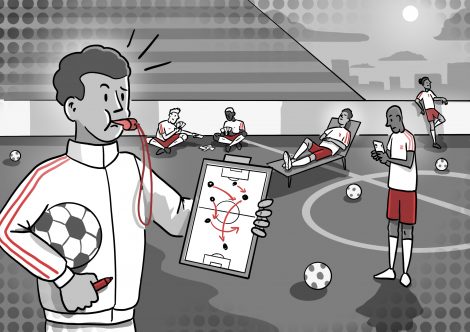Effective leadership behavior is (not) only in the hands of the manager

Leadership does not work without those who are led. Despite this central role, in research and practice, led people are often viewed merely as passive recipients of leaders’ influences. However, the Reversing-the-Lens theory suggests that the characteristics of employees have an influence on how supervisors behave toward their employees – and how the employees perceive their manager. What are the consequences for leadership and its evaluation?
Leadership research and practice focuses primarily on leaders and how their behaviors impact employees’ perceptions, actions, and performance outcomes. In their studies, researchers even deliberately hold the characteristics of those being led (e.g., age, gender, length of employment, etc.) constant or factor them out in order to extract the pure effects of the leader’s behavior (Wang et al., 2019). The Reversing-the-Lens theory is about turning this perspective around by looking at the effects of the characteristics of those being led on leadership processes (Uhl-Bien et al., 2014; Shamir, 2007). The theory’s main proposition is that the characteristics of those being led – such as personality traits – influence how leadership is understood and shape leaders’ actions (Wang et al., 2019). Empirical research supports this proposition.
The positive influence of extraverts
Meta-analytic results show, among other things, that people led who have high agreeableness and extraversion scores evaluate their leaders more positively than those who are less agreeable and extraverted (Wang et al., 2019). Another study examined whether the influence of the characteristics of those being led on leader evaluations was due to differences in the perceptions of those being led or to the leader’s response to the personality traits of those being led. Overall, the results suggest that both are true. The relationships between characteristics of those being led and leadership ratings reflect both how people who are led perceive the same leadership behavior and actual differences in how leaders behave toward people with different characteristics. For example, leaders appear more likely to exhibit transformational and less abusive behaviors toward people being led who are more agreeable (Wang et al., 2019).
Considering interactions not only one-sidedly
What are the implications for practice? Many companies use 360-degree feedback to evaluate and develop managers’ leadership skills or to base bonus and promotion decisions. The fact that characteristics of those being led have an impact on the evaluation of leadership behaviors is relevant in such processes. For example, a leader who has more agreeable or extraverted team members might be perceived to lead more effectively than an equally effective leader whose team members are less agreeable or extraverted. By including characteristics of those evaluating as part of the feedback process, inaccurate conclusions can be avoided (Wang et al., 2019). In addition, leaders and employees can be made aware of the extent to which characteristics of those being led influence leadership behaviors and how they are perceived.
Sources:

